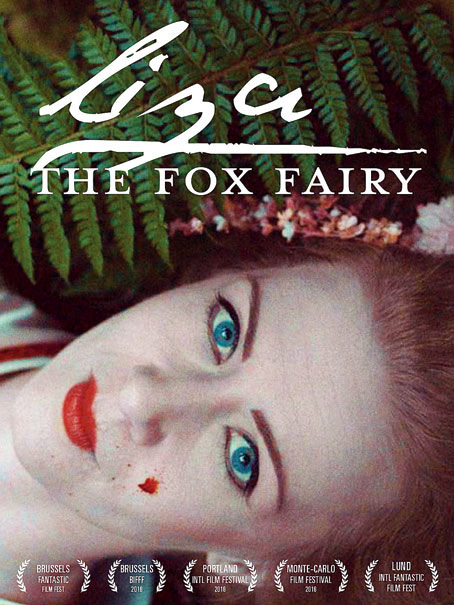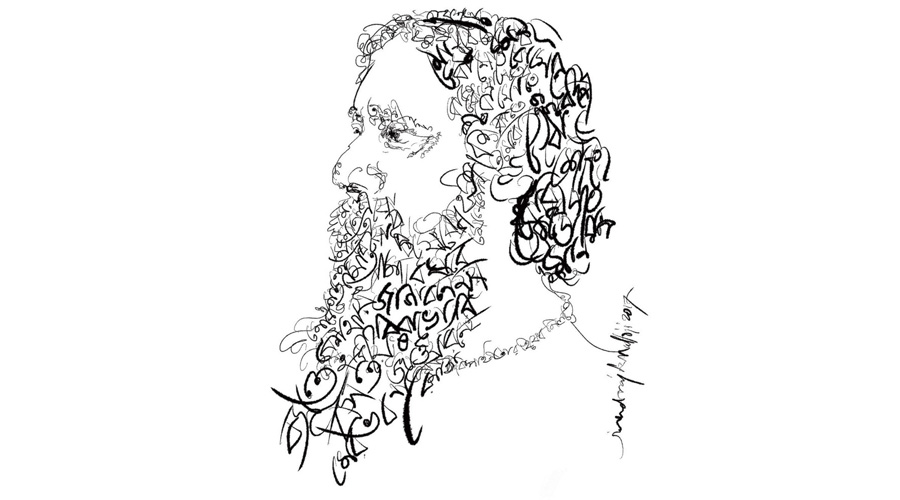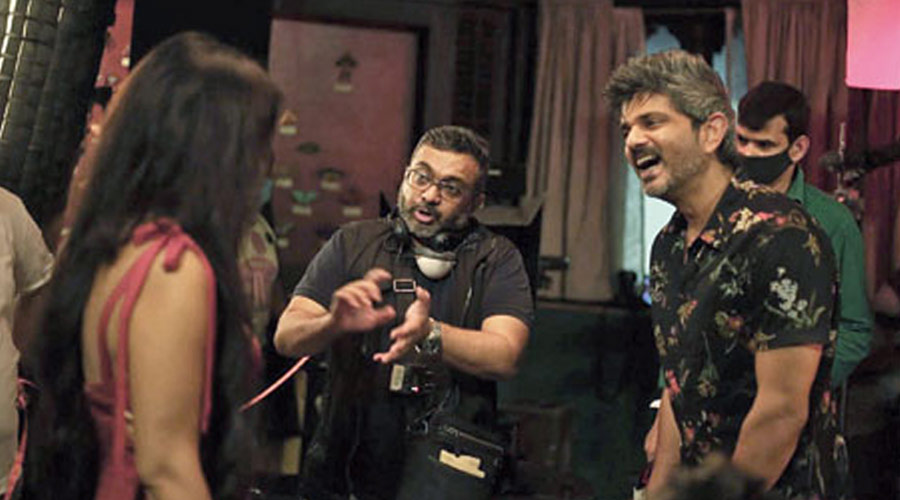Born of a Bengali mother in Calcutta but resident of Mumbai since his high-school years, Indrajit Nattoji hardly betrays his long absence from the city in his fluency in the Bengali language. The 47-year-old former student of Julien Day School talks about his second feature film Aafat-E-Ishq that dropped on Zee5 on Friday.
Is Aafat-E-Ishq your first feature film?
I had started as an ad film-maker. This is my second feature. The first was Aagey se Right in 2009 with Shreyas Talpade and K.K. Menon, for UTV Motion Pictures.
What took you so long to make your second feature?
After doing a film you realise you need to learn so much more. I wanted to go back to writing and train myself more. I also wanted to do more with art and craft. I took up an interesting project with Indian Music Experience in Bangalore. It’s the first-of-its-kind permanent museum on Indian music. I made a five-minute introductory film there. They show it on a curved 100ft screen. How can you talk of Indian music in five minutes? So I talked about it from the point of view of a child who wakes up on hearing many sounds and her mother tells her that all sound is music. She explains to her how sound becomes melody and how melody becomes raga and how raga becomes an emotion, through animation. Watching the film is an immersive experience, with surround sound. It was a passion project. The museum was launched in 2019.

The poster of the Hungarian film on which Aafat-E-Ishq is based
Aafat-E-Ishq is an adaptation of a Hungarian film, right?
Yes, Liza the Fox Fairy. Zee Studio had the rights for the film. They needed someone with foreign language sensibilities to reinterpret it. I had gone for another project and they pitched it to me. I saw the film and got hooked. The easy way would have been to go to Goa, pick a Christian family and play with similar Western sensibilities. I went to the opposite extreme. I chose the heartland, a small town in UP, and made it my own. I saw the original film twice, once as audience and the second time as a film-maker. Then I started writing the script with another writer, creating characters based on the story. It is more an adaptation than a remake.
What is the original film about?
Liza the Fox Fairy is a much-awarded film. It is a fantasy about a woman looking for true love who has a ghost as a friend. Mysteriously, whoever she meets dies, that too drastically. Is she the culprit? If she is not, who is? It’s a very interesting film. All this is happening at a time when Hungary is moving from socialism to consumerism. There is a satire on that change. Those sensibilities are different from ours.
Did you find a parallel in the Indian context?
My interpretation involved influx of social media in small towns. Everybody is on the phone, trying to connect virtually with each other. The habit of reading books and magazines or talking to people is fading away. My character is an anomaly. She doesn’t have a phone. She reads books. That subtext is there in my film. It is a dark comedy with a lot of drama.
Did you shoot on location or create a set?
I did not want to shoot in a set. Every location, every house has a story. I did a lot of recce in Lucknow and Benaras. But the pandemic struck and we had to shift to Nasik, near Mumbai, for practical purposes. We found an ill-maintained old mansion and recreated a fictitious UP town there with a river and a temple. That kind of a house is perfect for a thriller. It is also a character in the film. In Lucknow and Benaras they have so many different kinds of Hindi dialect — pure, Urdu-heavy, ghatpaar… they speak a separate dialect on the river banks. My writer did a lot of research on the dialects.
When did you shoot?
We shot for 27 days in the middle of the pandemic, in last October. Nasik had opened up for shoot for a little while. We used that window. It was far safer than in Bombay.
Tell us about the cast.
The lead, Lallo, is played by Neha Sharma. It was very difficult to find the main character. She had to look extremely innocent, beautiful, at the same time not beautiful, and a brilliant actress. There is a transformation that takes place in her character when she becomes beautiful to the world. Earlier, she was almost invisible. Nobody looked at her. Neha is very modern and glamorous in her Instagram account. I wanted her to be a small town, north Indian girl. In real life, she is actually quite down to earth. I went by my gut feeling. She worked very hard on the dialect. It helped that her Hindi was very good as she is from Bihar.

Neha Sharma and Namit Das in a still from the Zee5 film
Ila Arun is in the film as well.
Ila Arun is basically a theatre person, an erudite and brilliant actor, poet and singer. She used to improvise during the shoot. She’d ask: “Mera ek poem hai” or “Ghalib ka kuchh yaad aa raha hai. Bol doon?” I’d say: “Bol dijiye.” The way she interpreted the character was beautiful. She’s close to 70 yet her energy was enough to checkmate us. She plays the paralysed owner of the old haveli, whom Lallo takes care of. She is reduced to a few rooms with the tenants having taken over the rest of the property. I haven’t gone into her past but that feel is there.
Tell us about some of your ad films. You shot a promo for Rajasthan Royals.
Yes. When the Rajasthan Royals anthem was launched, Ila Arun had sung for it. I also did the title card for Detective Byomkesh Bakshi. Dibakar Banerjee (the film’s director) was my senior at the National Institute for Design. He used to have a lot of regard for my art. When I heard he was doing the film, I called him and said: “Let’s do something interesting for the title sequence”. Attention is not given here to it whereas in the West, the title sequence is a culmination of art, technology and film-making.

One of Nattoji’s portraits of Tagore using the bard’s lyrics and writing style
You held an interesting exhibition in 2018 in Calcutta on Tagore.
Ma is a trained classical singer. I used to have conversations with her about Tagore. I got interested in his poetry. I wanted to use the technique of his writing to create his portraits at various stages of his life. The collection represents a part of his work as interpreted by me. His face has been drawn as if I am writing his lyrics. If you scrutinise a painting, you can read that piece of literature. For example, I used the lines of Where the mind is without fear for a portrait of the time when he got the Nobel. For Esho hey Baisakh, I treated him as a middle-aged man. It was a collection of 16 portraits.
